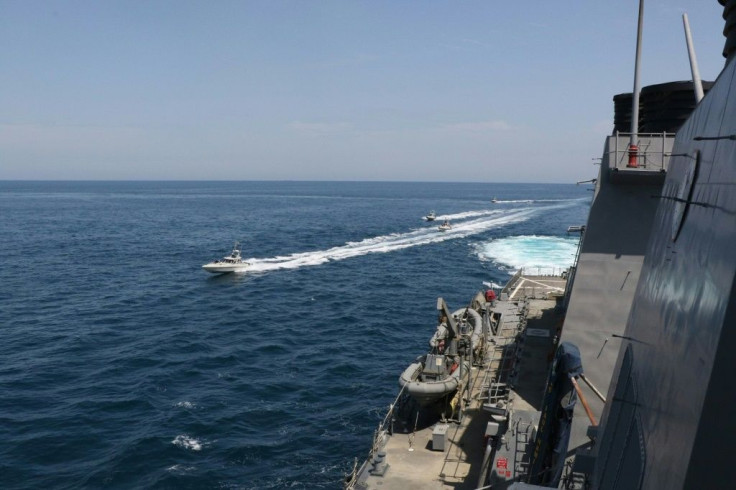China Warns US Navy Sailing Near Taiwan is 'Extremely Dangerous'
China has called Tuesday’s transit of the U.S. guided-missile destroyer USS Mustin through the Taiwan Strait an "extremely dangerous" move that goes against the interests of both countries.
The scenario has been played out several times in recent months. According to news reports, The USS Mustin, a part of the USS Ronald Reagan aircraft carrier strike group is the seventh American warship to sail through the passage this year, each time drawing an angry response from the Communist country.
The Eastern Theater Command of China's People's Liberation Army (PLA) who was keeping a close watch on activities in the strait spoke to Reuters about the latest incident. "Any words or deeds that ... cause trouble in the Taiwan Strait [and] are not in line with the fundamental interests of China and the United States, harm the well-being of compatriots on both sides of the strait, pose real threats to peace and stability in the region, and are extremely dangerous", it said.
Taiwan's defense ministry called the southward transit through the strait an "ordinary mission" but Yen Chen-shen, an international relations professor at National Chengchi University in Taipei, called the move a clear signal to Beijing.
"The passage represents the United States' will to push through its freedom of navigation operations in international waters to counter the mainland’s military expansion in the South China Sea and the Indo-Pacific region. By regularly sending warships to transit the Taiwan Strait, the US also wants to establish a new normal," told Reuters.
The American view of the passage was given in a statement by the Japan-based 7th Fleet of the U.S. Navy which The South China Morning Post reported Wednesday morning. The statement said, "The U.S. 7th Fleet conducts forward-deployed naval operations in support of U.S. national interests in the Indo-Pacific area of operations. As the U.S. Navy’s largest numbered fleet, the 7th Fleet interacts with 35 other maritime nations to build partnerships that foster maritime security, promote stability, and prevent conflict."
Tensions in the Taiwan Strait stem from Beijing’s insistence that the island is part of its sovereign territory and their apparent willingness to use force to achieve a reunification under Chinese Communist rule. The separation took place in 1949 after the end of the Chinese civil war in 1949 when Chiang Kai-shek's troops retreated to Taiwan and began to forge relations with the U.S. during the Korean War of the early 1950s.
In 1979, when relations between the U.S. and China were friendlier, Washington switched formal diplomatic recognition to Beijing but maintained ties with Taipei with the Taiwan Relations Act that provides a U.S. security guarantee for the island where Taiwan can look to the U.S. if threatened.
The USS Mustin was not alone as it traveled south in the strait and sailed close to mainland China’s east coast and the Taipei-governed Matsu Islands. The PLA and Taipei both sent warships to keep a watch on the American guided-missile destroyer.
After passing through the strait the USS Mustin rejoined the USS Ronald Reagan strike group near the Pratas Islands in the South China Sea.

© Copyright IBTimes 2025. All rights reserved.




















